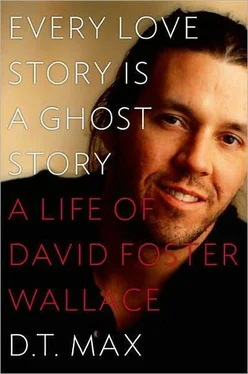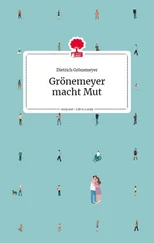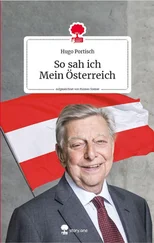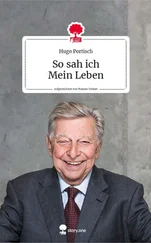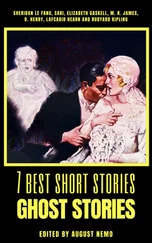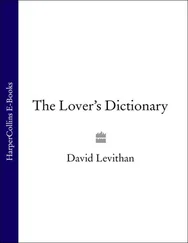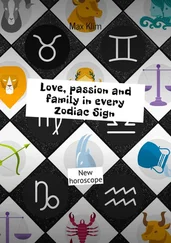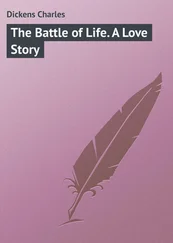On his first application for Yaddo, filled out in September 1986, Wallace wrote that along with “Westward” he was also working on a novel with the tentative title Infinite Jest , adding that one reason he wanted to go to the retreat was to “try to determine just where and why the stories leave off and the novel begins.” Likely, by then, the Incandenza family’s follies were already in draft. Stylistically, they follow closely in the hyperverbal footsteps of the Beadsmans: 17Hal, the family’s “tennis and lexical prodigy,” corresponds to Lenore of Broom ; his father, the brilliant suicide James, a filmmaker, tracks to Lenore’s great-grandmother, another absent genius. In addition, without the Incandenzas the title on the Yaddo application makes little sense. You can’t have Hamlet without a ghost. 18
But at Yaddo, Wallace clearly found writing “Westward” more urgent, and it was likely not for several years that he returned to the novel. The third strand, the pages on Don Gately, could not have been begun before early 1990, by which time Wallace had entered the real-life counterpart to Ennet House. By fall 1991 he had likely begun interweaving his narrative; the delicate design of the novel was beginning to fall into place. On one side were the Incandenzas led by Avril, the dominating and complex matriarch. Hal, addicted to pot, is the youngest of her three sons, the emotional center of this part of the book, except that one of the points of the book is that that center is empty:
Hal himself hasn’t had a bona fide intensity-of-interior-life-type emotion since he was tiny; he finds terms like joie and value to be like so many variables in rarified equations, and he can manipulate them well enough to satisfy everyone but himself that he’s in there, inside his own hull, as a human being …when in fact inside Hal there’s pretty much nothing at all, he knows.
Hal’s two older brothers are Orin, a professional football player and womanizer in Phoenix, and Mario, who suffers from a cognitive and physical disability. Avril is now in a relationship with her late husband’s brother, another of the many whiffs of Hamlet in the story.
The family runs the Enfield Tennis Academy, where perfection is the goal and the best of the players are trained to satisfy, through their tennis games and commercial endorsements, the appetite of the consumerist culture they came from. On the other side are the residents of Ennet House, led by Gately. The Ennet House addicts are not being cultivated to feed America’s obsessions; they are the people who’ve OD’d on them. 19The two worlds, as in real life, live in parallel, interacting only when they have to, with only a “tall and more or less denuded hill” separating them. Yet they are thematically joined — the Enfield Academy world is preppy, team-focused, and saturated with drugs; the Ennet House world is poor, crime-ridden, and shattered by drugs. Both are hemmed in by self-absorption: for the Enfield players their solipsism is narcissism, the risk that all the attention being focused on them will make them believe they are blessed in some more than ordinary way; for the Ennet House residents the solipsism is that of despair, but also the self-centeredness at the heart of therapy and recovery, a world where the self is so damaged that nothing else can get near it. Character after character there sees his or her wounded past and nothing else, while up the hill player after player sees only his or her potential. Overseeing both sides, literally, are Marathe and Steeply, competing (or possibly cooperating) secret agents, whose function in the novel is to sound the themes as well as give a motor to the plot, which centers on the idea that before committing suicide James Incandenza had made a movie so absorbing that anyone who watches it succumbs to total passivity. The original of the video cartridge — Wallace imagines cartridges as something like minidiscs — has disappeared and if the Quebecois find it they will have the ultimate terrorist weapon to use against their decadent neighbors to the south.
For Wallace to orchestrate his material was enormously complex, and as he rewrote scenes he must have had to work hard to keep straight the various voices he was using. He had always been good at mimicry, but the voices in the recovery house chapters are subtler and truer than in the other sections. They seem to descend from a caring narrator rather than be roused up as proof of his talent. Wallace created dozens of characters, many capturing aspects of how he saw himself. There is Kate Gompert (her name borrowed from a woman who had played on the junior tennis circuit with Wallace and would subsequently sue him unsuccessfully for libel). Addicted to pot and brutally depressed, Gompert casts a practiced eye on the psych ward where she finds herself:
Kate Gompert was on Specials, which meant Suicide-Watch, which meant that the girl had at some point betrayed both Ideation and Intent, which meant she had to be watched right up close by a staffer twenty-four hours a day until the supervising M.D. called off the Specials. 20
Another pot addict, Ken Erdedy, embodies a different side of Wallace. We first meet him barricaded in his apartment as he waits for an obliging young female acquaintance to bring dope—“a fifth of a kilogram of marijuana, 200 grams of unusually good marijuana.” The woman — the friend of a dealer — has promised it to him so he can go on one last binge before quitting for good, spurring an obsessively branching set of contingencies in Erdedy’s mind:
Where was the woman who said she’d come. She said she would come. Erdedy thought she’d have come by now…. He did not use the phone to call the woman who’d promised to come because if he tied up the line and if it happened to be the time when maybe she was trying to call him he was afraid she would hear the busy signal and think him disinterested and get angry and maybe take what she’d promised him somewhere else. 21
Once Wallace had his setup, he seems to have worked with remarkable speed because by April 1992 he had 250 finished pages for Nadell. He was not just in the grip of inspiration. The point was to get a contract for the book. It was “the bravest thing” he had done since getting sober, he would later tell an interviewer, but he believed the work was going so well that he could deal with the pressure. “Life is good. I’m trying to get together enough of this Long Thing to plead for an advance,” he wrote Brad Morrow with uncharacteristic confidence that March.
As promised, on April 15, 1992, he was ready with his proposal and partial manuscript of Infinite Jest , “a novel,” he noted in his cover letter, “although structurally it’s not much like any other novels I’ve seen.” “Plot-wise,” he added, “this thing proceeds according to something more like a broad arc than a Freytagian triangle. The low gear in which plot stuff proceeds in sections 1 and 2 is intentional.” He warned of footnotes that were “just brutal.” He addressed his note to “Bonnie and Gerry and Whatever Other Trusted and Hopefully Trustworthy Persons End up Reading this,” and urged everyone to mail the manuscript back or destroy it when they were done. He sent the package off to Nadell.
Wallace’s literary rebirth did not coincide with any calming of his conviction that he had to be with Karr. Indeed, the opposite. In fact, one day in February, he thought briefly of committing murder for her. He called an ex-con he knew through his recovery program and tried to buy a gun. He had decided he would wait no longer for Karr to leave her husband; he planned to shoot him instead when he came into Cambridge to pick up the family dog. The ex-con called Larson, the head of Granada House, who told Karr. Wallace himself never showed up for the handover and thus ended what he would later call in a letter of apology “one of the scariest days of my life.” He wrote Larson in explanation, “I now know what obsession can make people capable of”—then added in longhand after—“at least of wanting to do.” To Karr at the time he insisted that the whole episode was an invention of the ex-con and she believed him. 22
Читать дальше
